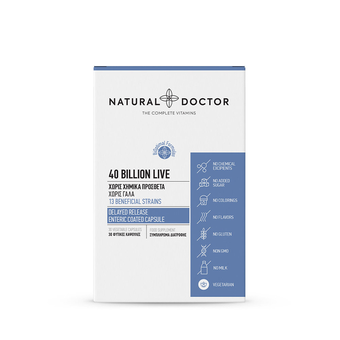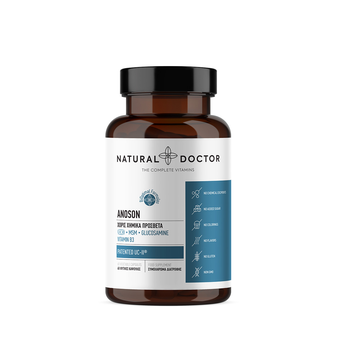Gut-brain axis

The ancient Greek physician Hippocrates, who lived 2,500 years ago, said that "all disease begins in the gut". As science progressed, it appeared that Hippocrates' idea was valid.
There is great interest and much scientific research on the importance of a healthy microbiome and its impact on health. We've all experienced that strange feeling of butterflies in our stomach when doing something new, exciting, or stressful.
This feeling occurs because there is a direct connection between the gut and the brain. This is referred to as the gut-brain axis and is best described as a two-way communication between the gut and the brain.
Messages travel from the gut through millions of neurons located in the gut via the vagus nerve. The vagus nerve is the longest in the autonomic nervous system. It is part of the nervous system that controls automatic physiological responses such as heart rate and digestion.
The vagus nerve fibres run from the gut to the base of the brain, and messages are bidirectional, going in each direction between the gut and the brain.
Permeability & Dysbiosis
How does a "leaky gut" affect the brain? The intestinal lining cells are stuck together with proteins with receptors. When this connection becomes "leaky", i.e., permeable, food particles and unwanted substances can leak into the circulatory system and cause inflammation.
According to scientists, several chronic diseases can arise from intestinal permeability. For example, excessive gut permeability can affect mood disorders, neurodegenerative diseases, and even autism.
Certain species of beneficial bacteria can protect the gut barrier. One example is Lactobacillus rhamnosus, which is associated with better functioning of the intestinal wall and the proteins that keep mucosal cells attached.
All systems in the body are interconnected. The microbes in the gut and their genes and metabolites help support balance throughout the body. A healthy microbiome helps the immune system function and can predict future health or disease.
Various microorganisms, such as beneficial bacteria in the gut, can prevent the invasion of pathogenic bacteria, help produce vitamins and regulate inflammatory processes.
Blood-brain barrier
We used to think of the blood-brain barrier as an impenetrable barrier that protected the central nervous system and brain from bacteria, toxins, and other invaders.
We now know that it can be compromised and that changes in the microbiome are related to the permeability of the blood-brain barrier as well.
When pathogenic bacteria replace healthy bacteria, gut dysbiosis occurs. In the case of dysbiosis, the gut microbiome can have a very different metabolic profile than a healthy microbiome.
For example, studies show that the composition of the gut microbiome of a person with mild cognitive impairment in the early stages of Alzheimer's disease and other forms of dementia differs from that of people with normal cognitive function.
Recent studies suggest that the gut microbiome may also contribute to developing other neurodegenerative diseases like Parkinson's, psychiatric illnesses, and stroke.
Alterations in the gut-brain axis have also been associated with an autism spectrum disorder. Studies show that gastrointestinal problems are more prevalent in children with autism.
We also know that diabetes, hypertension, obesity, and hypercholesterolemia are among the most critical risk factors for cognitive decline. With the connection between cognitive decline and these chronic metabolic diseases, research is shifting to look at the dietary and lifestyle influences that affect the microbiome.
What else supports a healthy microbiome and brain health? The first step is to follow a diet rich in nutrients, less processed foods and sugar that significantly alters the microbiome. Supplementation with a probiotic supplement like 40 Billion Live with 13 beneficial strains, including Lactobacillus rhamnosus, is a good start. It is free from chemical additives and milk derivatives, with 40 billion beneficiary microorganisms in an enteric-coated capsule with time-release technology.




